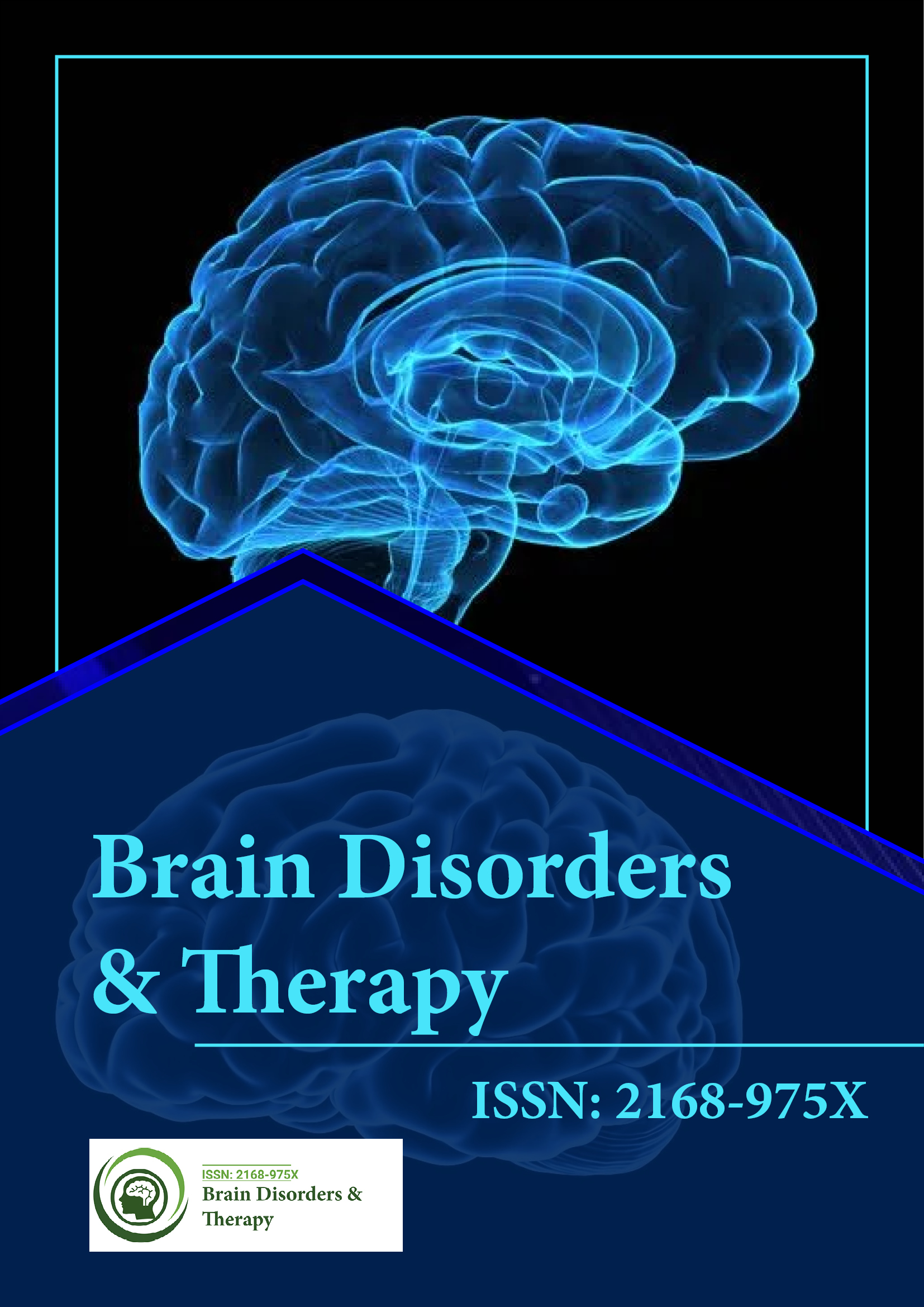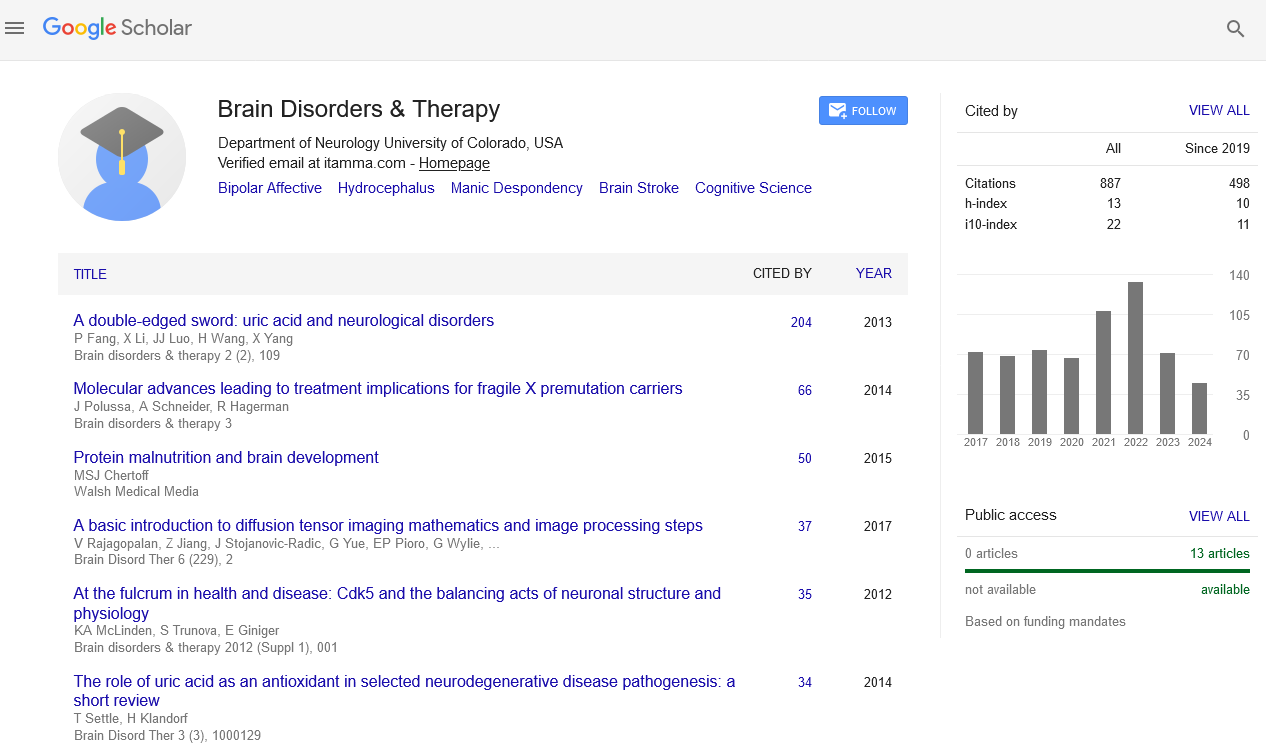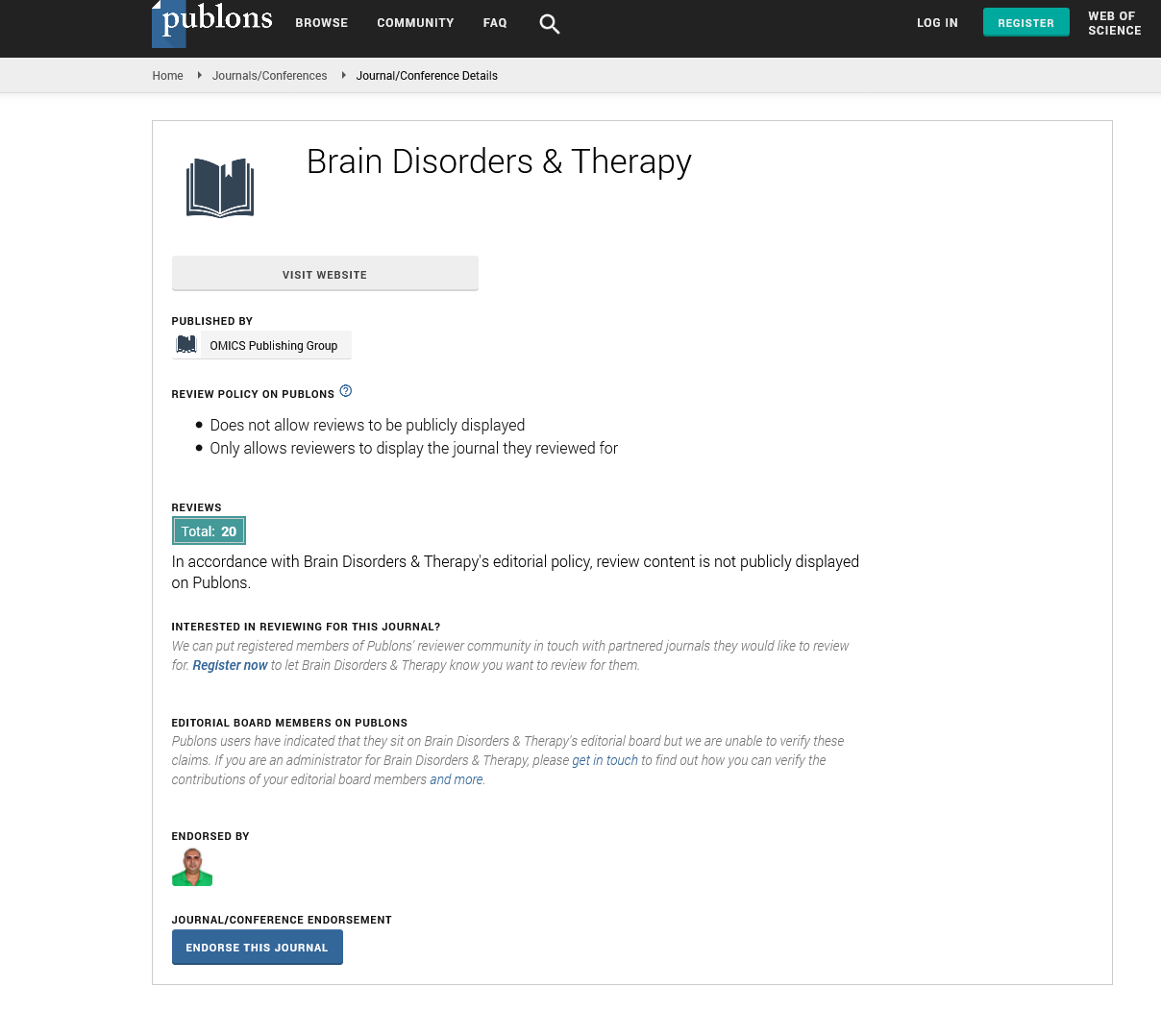Indexed In
- Open J Gate
- Genamics JournalSeek
- JournalTOCs
- RefSeek
- Hamdard University
- EBSCO A-Z
- OCLC- WorldCat
- Publons
- Geneva Foundation for Medical Education and Research
Useful Links
Share This Page
Journal Flyer

Open Access Journals
- Agri and Aquaculture
- Biochemistry
- Bioinformatics & Systems Biology
- Business & Management
- Chemistry
- Clinical Sciences
- Engineering
- Food & Nutrition
- General Science
- Genetics & Molecular Biology
- Immunology & Microbiology
- Medical Sciences
- Neuroscience & Psychology
- Nursing & Health Care
- Pharmaceutical Sciences
Physical Exercise Intervention in Brain Disorders
International Conference on Brain Disorders & Therapeutics
August 24-26, 2015 London, UK
Trevor Archer
University of Gothenburg, Department of Psychology, Gothenburg, Sweden
Posters-Accepted Abstracts: Brain Disord Ther
Abstract:
Physical exercise or activity regimes ameliorate regional brain and functional deficits of braindisorders, not only in the clinical setting but also in animal models of disorder, notwithstanding whether endurance, aerobic or resistance regimes are applied.Physical exercise offers a non-invasive, non-pharmacologic intervention that has been found effective for treatment of several neuropsychiatric and neurologic conditions.Physical exercise is linked to individuals whose affect profiles are invariably positive and it induces anti-apoptotic and anti-excitotoxic effects; e.g. in an adolescent and adult population of 280 subjects, it was observed that the propensity and compliance for exercise, measured as the ‚??Archer ratio‚?Ě, was predicted by a positive affect.Physical exercise provides a plethora of beneficial effects against stress, anxiety, depression, negative affect and behavior, poor impulse control, and compulsive behavior concomitant with improved executive functioning, working memory and positive affect, as well as improved conditions for relatives and care-givers. Brain-derived neurotrophic factor, an essential element in normal brain development that promotes health-associated behaviors and quality-of-life, though reduced in disorder conditions, is increased markedly by the intervention of regular physical exercise. Functional, regional, and biomarker deficits, as well as hypothalamic‚??pituitary‚??adrenal disruptions, have been improved through regular and carefully applied exercise programs.Physical exercise bestows a propensity for eventual manifestation of ‚??‚??redifferentiated‚??‚?? developmental/life cycletrajectories that that offerchildren, adolescents adults with a prognosis that is more adaptive functionally, independent of the applications of other therapeutic agents and treatments: ‚??use it or lose it‚??.
Biography :
Email: trevor.archer@psy.gu.se


